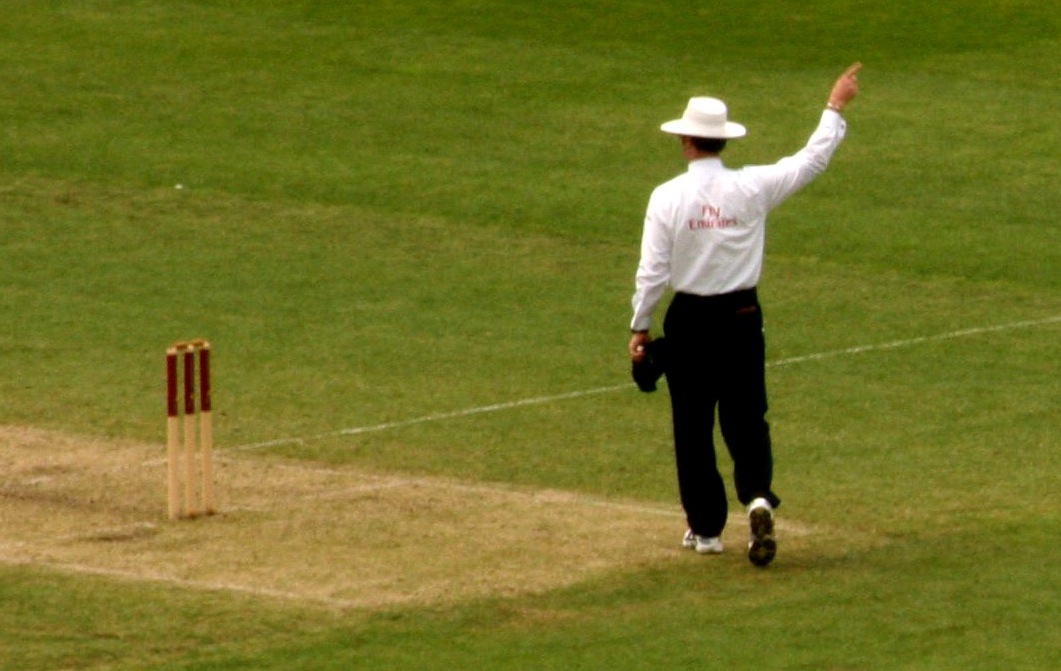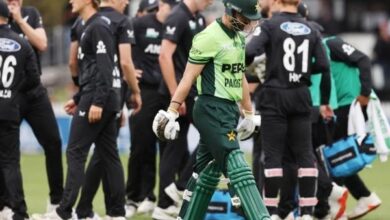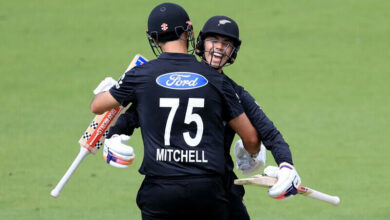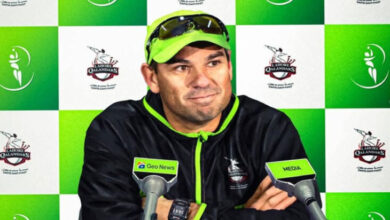

Charles Bannerman
It was 15 March 1877, and Australia and England played what became known as the first Test match ever. Opening the innings for Australia, Bannerman ended the day unbeaten on 126 in his team’s 166/6 and went on to score 165 in Australia’s 245 before retiring hurt. He scored 4 in the second innings as Australia won by 45 runs and went on to play two more Tests. Ten years on after making his Test debut as a player, Bannerman made his Test debut as an umpire and officiated in 12 matches.
Mark Benson
A good player of fast bowling, the left-handed opener was a regular part of the Kent set-up for 15 seasons, scoring 18,387 first-class runs overall in 292 matches at an average of 40.23. He got his Test debut against India in 1986, and made 30 and 21 in many hours of gritty batting. That, however, was his only Test appearance and he played just one ODI, and after retiring in 1995, Benson turned to umpiring, even becoming part of the International Cricket Council’s Elite Panel, and officiated in 27 Tests, 72 ODIs and 19 Twenty20 Internationals.
John Hampshire
The Englishman became the first to score a century on Test debut at Lord’s, against the Windies in 1969, but failed to build on that wonderful start despite being an attractive stroke-player who plied his trade with Yorkshire, Tasmania and Leicestershire for many years. Hampshire went on to play eight Test matches, tallying 403 runs, including two half-centuries to go with that only hundred. His domestic numbers underscore his ability: 28,059 runs from 577 matches at an average of 34.55. He retired in 1984 and made his appearance as a Test umpire five years later, and officiated in 21 Tests and 20 one-day internationals.
Peter Willey
A right-handed top-order batsman and off-spin bowler, Willey was England’s go-to man whenever the Windies were around, and he ended up playing 15 of his 26 Tests against the feared opponents between 1976 and 1986. He also played 26 ODIs. Willey’s greatest quality was perhaps his grit, which was on show on both occasions when he scored a Test century, both against the Windies. His 559 first-class appearances resulted in 24,361 runs and 756 wickets. In 1996, he officiated in his first Test, and ended up umpiring in 25 Tests and 34 ODIs.
Ian Gould (wk)
Gould, a wicket-keeper batsman who played over two decades of first-class and List A cricket, ended up playing no Test cricket and only 18 ODIs, including in the ICC Cricket World Cup 1983. He was part of an Ashes Test though, coming on as a substitute in Melbourne in the 1982-83 series. He was a solid performer, effecting 603 dismissals in first-class cricket and 279 in List-A cricket, to go with 8756 and 4377 runs in the two formats respectively. He turned to coaching after retirement and then umpiring, and has gone on to officiate in 65 Tests, 125 ODIs and 37 T20Is.
James Lillywhite Jnr
Coming from a major 19th century cricketing family, with many of his relatives playing first-class cricket, Lillywhite, then 35, was named captain in the first-ever Test match in 1877, but that series was his only brush with Test cricket, as the left-arm spinner and hard-hitting batsman ended with eight wickets and just 16 runs. Playing first-class cricket for 23 years with Sussex, Lillywhite hit 5523 runs and bagged 1210 wickets, and later turned out as umpire in six Test matches, between 1882 and 1899.
Asoka de Silva
The most successful Sri Lankan umpire in terms of appearances in international cricket, de Silva is probably a better-known official than cricketer, even though he played 10 Tests and 28 ODIs between 1985 and 1992. A useful leg-spinner and lower-order batsman, de Silva scored 323 international runs and picked up 25 wickets. He officiated in his first international game – an ODI between Sri Lanka and Pakistan in Galle in 1999 – just two years after his last first-class appearance and was a part of 49 Tests, 122 ODIs – including at the 2003 and 2007 ICC Cricket World Cups – and 11 T20Is, the last of them in June 2012.
Kumar Dharmasena
One of the regulars in Sri Lanka’s outstanding ODI team of the mid-1990s, Dharmasena formed a part of the spin pack led by Muttiah Muralitharan, using his quick and accurate off-spinners to good effect in 31 Tests and 141 ODIs between 1993 and 2004. He ended with 69 Test wickets and 138 ODI wickets and was a useful batsman too, getting better with time as he scored 868 Test runs and 1222 ODI runs. He turned to umpiring after retiring from all formats of the game in 2006. So far, he has officiated in 53 Tests and 84 ODIs along with 22 T20Is. He officiated in the opening ICC Cricket World Cup 2011 game and was one of the umpires for the final of the ICC Cricket World Cup 2015. He is also the only cricketer-turned-umpire to win the ICC’s David Shepherd Trophy, given to the Umpire of the Year, which he was given in 2012.
Paul Reiffel
The Australian right-arm pacer was known for hitting awkward lengths and his ability to move the ball off the pitch both ways, making him a difficult bowler to read. He appeared in 127 international matches – 35 Tests and 92 ODIs, picking up 210 wickets overall. His career was affected by a lot of injuries, which led to his retirement in 2002 when he was 36. His last international appearance, interestingly, was in the ICC Cricket World Cup final of 1999, which Australia won. Reiffel returned 1/29 from 10 overs on that occasion. A decent lower-order batsman, Reiffel ended with six half-centuries in Tests and one in ODIs. In 2009, he returned to the international fold as an umpire and has had a successful career, appearing in 36 Tests, 54 ODIs and 16 T20Is since.
Richard Illingworth
The left-arm spinner played first-class cricket for almost 19 years, making 376 appearances. In 1991, he made his Test and ODI debut for England, more for his miserly ways than great wicket-taking abilities. He took a wicket with his first ball in Tests and was a part of the England side that lost to Pakistan in the ICC Cricket World 1992 final, but never became a regular with England because of the presence of Phil Tufnell. Overall, he played nine Tests and 25 ODIs, picking up 49 wickets. He took up umpiring not long after quitting the game in 2002, making his international debut in 2010 and being a part of 32 Tests, 57 ODIs and 16 T20Is since.
Srinivas Venkataraghavan (c)
One of the members of the great Indian spin quartet, the off-spinner was accurate and effective, picking up 156 wickets in 57 Tests, and also making a name for himself for his close-in fielding. He played his first Test in 1965 and the last in 1983, playing a key role in India’s maiden Test series wins in the Caribbean and in England in 1971, picking up 35 wickets in eight Tests. He also captained India at the 1975 and 1979 ICC Cricket World Cups, and after a long gap following his retirement in 1985, officiated in his first game in 1993 after a short stint as an ICC match referee. He went on to officiate in 73 Tests and 52 ODIs, becoming one of the most respected umpires in the game before retiring in 2004.














